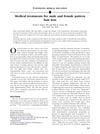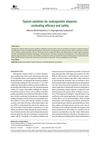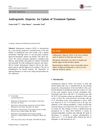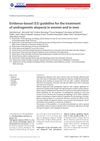10 years of my hair journey (2015-Current). Looking for thoughts and feedback! Progress Pictures 5/5/2025
The user has maintained their hair over 10 years using oral finasteride, oral and topical minoxidil, and other treatments like LLLT and ketoconazole. Despite starting hair loss at 17, they have largely preserved their hair, with some users suggesting a hair transplant for sparse areas.
View this post in the Community →
Similar Community Posts Join
6 / 1000+ results
community 2025 Official beginner guide for “I’m losing my hair, what can I do?”
For hair loss, start with Finasteride, Minoxidil, Ketoconazole shampoo, and Microneedling. For severe cases, consider Dutasteride, oral Minoxidil, or hair transplants.
community 30-Min Dermatology Visit – Best Questions to Ask About Balding? ( 175$ )
The conversation discusses hair loss treatments, focusing on finasteride, minoxidil, and other options like PRP and ketoconazole. It highlights the importance of asking specific questions during a dermatology visit to determine the cause of hair loss and appropriate treatments.
community 9 Months update - smp/min/fin/keto/derm
A user shared a 9-month hair loss treatment update using scalp micropigmentation (SMP), finasteride, minoxidil, derma pen, ketoconazole shampoo, and low-level laser therapy (LLLT), with plans for a hair transplant. Another person suggested increasing the dosage of finasteride and minoxidil and using a derma roller weekly.
community What is the ultimate hair regrowth protocol
The conversation covers aggressive hair regrowth treatments like Dutasteride, Minoxidil (oral and topical), RU58841, microneedling, and ketoconazole shampoo. It also mentions PRP, laser therapy, GHK-Cu injections, and hormone therapy for maximum regrowth.
community How does low level laser therapy?
Low-level laser therapy (LLLT) is debated for hair regrowth, with some users suggesting it should be combined with treatments like minoxidil and finasteride for effectiveness. Many users express skepticism about LLLT's efficacy and cost, emphasizing the need for the correct wavelength and quality devices.
community Clearing the air on how non-surgical treatments really work
Treatments for hair loss, including finasteride, dutasteride, minoxidil, ketoconazole, microneedling, and low level laser light therapy, which aim to reduce DHT production, increase cell absorption and blood flow, and stimulate epidermal stem cells. It also stresses the importance of patience when using these treatments.
Related Research
6 / 1000+ results
research An Update on Hair Restoration
Hair transplantation is the best treatment for hair loss, with new technologies improving results, and stem cell and gene therapies may treat severe baldness in the future.

research Experimental and Early Investigational Drugs for Androgenetic Alopecia
New hair loss treatments may include topical medications, injections, and improved transplant methods.

research Medical Treatments for Male and Female Pattern Hair Loss
Minoxidil and finasteride treat hair loss in men, while minoxidil treats hair loss in women.

research Topical Solutions for Androgenetic Alopecia: Evaluating Efficacy and Safety
Topical treatments for hair loss can be effective but need careful safety evaluation.

research Androgenetic Alopecia: An Update Of Treatment Options
Minoxidil is the only FDA-approved topical drug for treating male or female pattern hair loss, and other medications like finasteride and dutasteride can also increase hair growth.

research Evidence-Based Guideline for the Treatment of Androgenetic Alopecia in Women and Men
Use minoxidil for hair loss; finasteride and dutasteride for men, dutasteride for women.